- Revenue Cycle Management
- COVID-19
- Reimbursement
- Diabetes Awareness Month
- Risk Management
- Patient Retention
- Staffing
- Medical Economics® 100th Anniversary
- Coding and documentation
- Business of Endocrinology
- Telehealth
- Physicians Financial News
- Cybersecurity
- Cardiovascular Clinical Consult
- Locum Tenens, brought to you by LocumLife®
- Weight Management
- Business of Women's Health
- Practice Efficiency
- Finance and Wealth
- EHRs
- Remote Patient Monitoring
- Sponsored Webinars
- Medical Technology
- Billing and collections
- Acute Pain Management
- Exclusive Content
- Value-based Care
- Business of Pediatrics
- Concierge Medicine 2.0 by Castle Connolly Private Health Partners
- Practice Growth
- Concierge Medicine
- Business of Cardiology
- Implementing the Topcon Ocular Telehealth Platform
- Malpractice
- Influenza
- Sexual Health
- Chronic Conditions
- Technology
- Legal and Policy
- Money
- Opinion
- Vaccines
- Practice Management
- Patient Relations
- Careers
Standing on the Bare Bones of History
Our travel columnist tours the world to photograph the final resting places of some of the rich -- and not-so-rich -- and famous.
Photography by the author. As a newly arrived country doctor in Texas, I was asked to go to a grandfather’s funeral to safeguard the health of the grandmother who “has a fragile heart, doctor.” Before the month was out, I had been asked to attend two more funerals for medical reasons. At the time, this was a common role for a rural family doctor, but I stopped providing the service the day I overheard two women in the adjoining aisle of a grocery store opining there was something weird about this new doctor who seemingly got his kicks attending funerals.
And maybe there is something equally weird about a physician who photographs graves, albeit ones of famous people.
So be it.
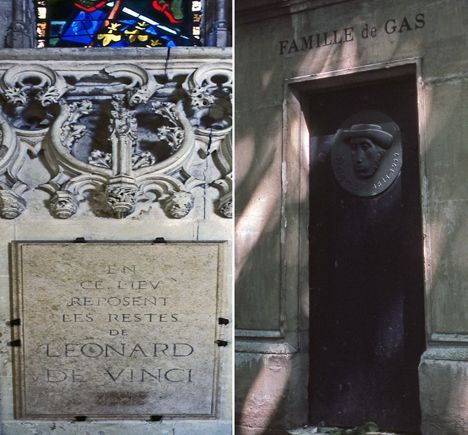
I was moved to use my camera first in the Loire Valley in France when I was startled to find the tombstone of Leonardo da Vinci in the chapel of Saint-Hubert in the castle of Amboise. I had thought he would have been laid to rest in Rome, as Raphael in the Pantheon. But no, he had come under the patronage of King Francis I of France three years before he died in 1516.
I was surprised, also, to find the spelling at the grave of Edgar Degas in Montmartre Cemetery in Paris. The artist’s father, a wealthy banker, on arrival from Naples had pretentiously changed the family name to de Gas to imply French aristocracy. Although the artist went back to the original spelling when he was age 30, the family crypt kept the affectation.
I recalled a story I’d read at the Shelburne Museum in Shelburne, Vt., a display of Americana that started from the personal collection of Electra Havemeyer Webb. Her father founded the Domino Sugar Co. and her mother was the celebrated, wealthy art collector Louisine Elder. At the age of 19, Louisine went to Paris with her aunt and her weekly allowance of $100. In an art gallery, she saw a painting and impulsively told the artist she’d give him her $100 for it. The artist, it turned out, had tried for a month to sell his work and had resolved that very day to give up and go home. Louisine’s purchase changed his life. The artist’s name was Degas.
The grave of another artist, Paul Gauguin, lies, not unexpectedly, in French Polynesia, in Cavalry Cemetery on Hiva ‘Oa in the Marquesas Islands. He died at age 54, unlike Degas who lived to the age of 83. Gauguin possibly had a fuller life, as he was widely known for his sexual exploits -- particularly with native girls who were sometimes the subjects of his work. He died of syphilis.
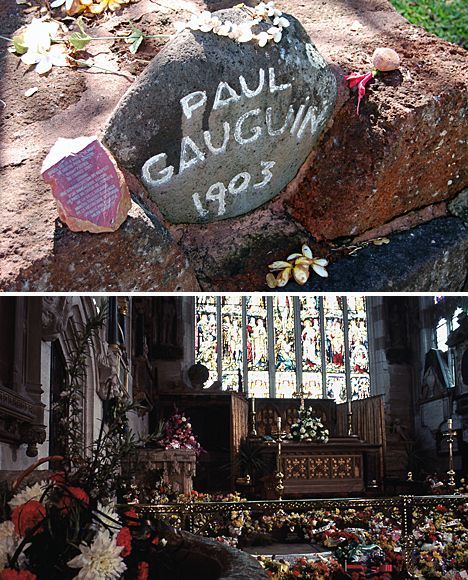
Artists are said to be poor in business and many died in poverty. William Shakespeare’s final finances are not known, though he was thought of as a businessman, but his last resting place is well established in Holy Trinity Church in Stratford-on-Avon in England. Buried in 1616, he has escaped grave robbers perhaps due to the carved threat on his tomb, a warning apparently composed by the playwright himself as he evidently feared his grave might be disturbed. It reads:
Good frend for Jesvs sake forbeare,
To digg the dvst encloased heare.
Bleste be ye man yt spares thes stones,
And cvrst be he yt moves my bones.
The meaning, roughly translated, is:
Good friend, for Jesus’ sake, forbear
To dig the dust enclosed here;
Blest be the man that spares these stones
And curst he that moves my bones.
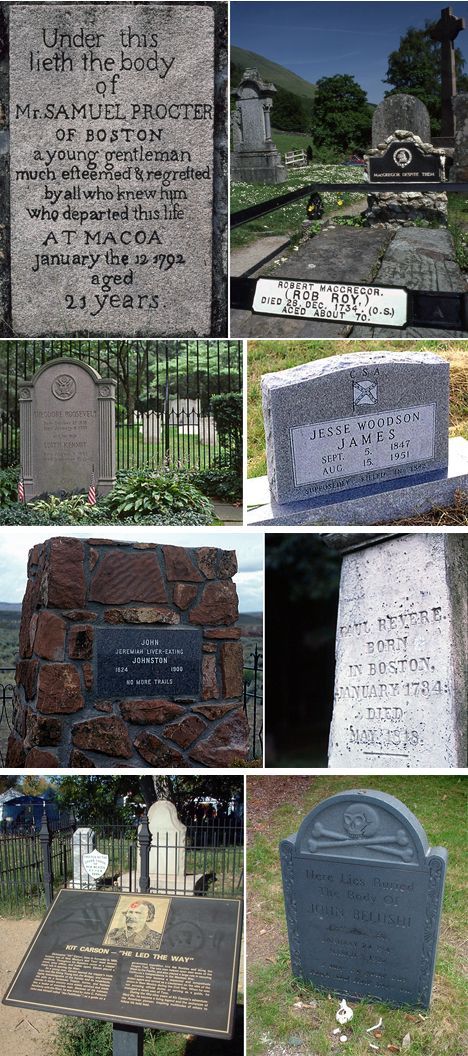
I have come across the graves of young Yankee adventurers who met their maker in far off lands and Scottish folk heroes who died where they were born. In the U.S., without any effort, I’ve found the resting places of presidents and bank robbers, mountain men and Revolutionary War heroes. Teddy Roosevelt in Oyster Bay, N.Y.; Jesse James in Kearney, Mo.; Jeremiah Johnston in Cody, Wyo.; Paul Revere in Boston; Kit Carson in Taos, N.M., (apparently because he had property there); John Belushi in Abel’s Hill Cemetery on Martha’s Vineyard.
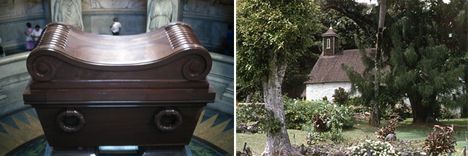
And what a contrast some grave sites are to the resting places of other famous names. Compare, for example, Napoleon’s flamboyant wooden coffin at Les Invalides in Paris to the humble grave of Charles Lindbergh, the “Lone Eagle.” It took some effort to locate and stand somberly at the burial marker for Lindbergh at Hana on Hawaii’s Maui in the lee of the Palapalo Ho’omau Church. Locals respect his wish for privacy.
So is it impertinence to trample, as it were, on the bones of history, to consider a casual nod of the head sufficient acknowledgement, enough tribute to those famous names? Is this something simply for the maudlin?
Not when you read the plaque on the grave of Frank Sinatra in Palm Springs, Calif. It gives hope for the future from one of his favorite songs: “The Best is Yet to Come.”
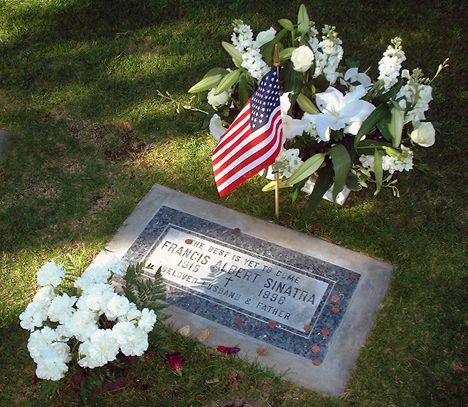
Eric Anderson, a retired MD who lives in San Diego, is one of our resident travel & cruise columnists for Physician's Money Digest. The one-time president of the New Hampshire Academy of Family Practice, Eric is the only physician in the American Society of Travel Writers. He has also written five books, the last called The Man Who Cried Orange: Stories from a Doctor's Life.
